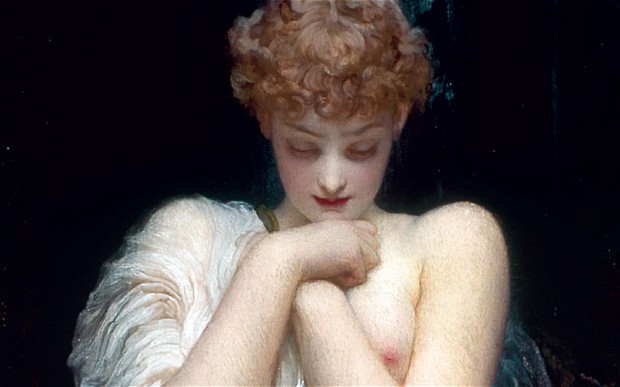CHRISTIE DODMAN-LEAR reviews the ‘Victorian Obsession’ at the Leighton House Museum.
Entering into the understated foyer of the Victorian dollhouse that is the Leighton House Museum I was unprepared for the Oriental grandeur that lay beyond the reception. Lord Leighton was a painter himself and became the head of the Royal Academy in 1878. In this house he received the preeminent painters and writers of the day, helping to cultivate the decadent style that we now associate with the fin de siècle. I had therefore anticipated some level of decadence but this “Arab Hall” was an unexpected oasis of calm. A mosaic spring is the centrepiece of this part of the house and reflects Leighton’s interest in the Middle East – where he travelled extensively. The adjacent “Narcissus” hall continues the Islamic theme with stunning peacock blue tiling and introduces Leighton’s interest in the classical world with Palladian columns supporting the rich, oak panelled ceiling. A stuffed peacock – an emblem of the decadent movement – is placed at the bottom of the stairs, virtually camouflaged by the mosaics. This all makes for a unique blend of different aesthetics that exemplify the turn of the century’s taste for decadence, classical beauty and Orientalism. These themes also unite the impressive collection of oil paintings hung in the rest of the house.
The drawing room and dining room display pre Raphaelite paintings by John William Waterhouse, Edward Burne-Jones and Henry Arthur Payne, which explore the Victorian obsession with the femme fatale, observed through the lens of Arthurian legends. The drawing room with its gothic decoration, velvet drapery and round table help to capture this evocation of Arthurian romance. ‘The Crystal Ball’ by Waterhouse encapsulates the darkly alluring beauty that the Pre-Raphaelites hoped to capture. On the opposite wall Millais’ ‘The Crown of Love’ and Payne’s ‘The Enchanted Sea’ present more melancholic medieval heroines with uncertain fates. These conflicting depictions of beautiful women reflect the increasingly uncertain attitude patriarchal Victorian men had towards them; some presented women as holding a mystical power over men, while others reinforced the domestic role that women were expected to play through their painting.
Leighton’s own painting ‘Crenaia the Nymph of Dargle’ seems to suggest that he was more interested in depicting women as liberated, at least in a natural setting. This painting, hung in the antechamber of the second floor, reveals as much as it conceals; the nymph’s body is covered in a light drapery that blurs into the backdrop of a waterfall. The model, Dorothy Dene, often posed for Leighton and was unusual in that she would not only pose fully naked for him but would also attend the exhibitions that she featured in. Female models who agreed to pose nude would be paid double, so she may have been an example of the “New Woman” that was emerging at the turn of the century – she would also become the inspiration for Bernard Shaw’s ‘Pygmalion.’ Other paintings in the anti-chamber also use the classical world in order to frame female beauty.
However, it is not until I reach the final part of the house that the tour de force of classical painting is revealed. In a separate gallery space of its own Alma-Tadema’s ‘The Roses of Heliogalbulus’ is displayed. Large and brightly lit, this Victorian masterpiece responds to the Victorian fascination with decadence in the classical world. A historical account states that the depraved young emperor Heliogabulus actually drowned his guests in lilac petals on one occasion. The guests in the painting do not seem aware of this impending danger and the scene is festive, hedonistic and luxurious. Detailed sketches of architecture and furniture from his time in Italy accompany this painting and allude to the amount of research and historical detailing that went into the work. The richness of the rose petals which engulf the guests are rendered incredibly vividly; they feel as if they are about to flow from the painting into the room. The rose incense which permeates the gallery space intensifies this impression.
‘Victorian Obsession’ has been extended until the 6th April. For tickets and more information click here: http://www.rbkc.gov.uk/subsites/museums/LeightonHouseMuseum/AVictorianObsession.aspx.





